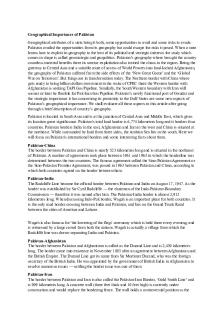Constitutional History of pakistan PDF

| Title | Constitutional History of pakistan |
|---|---|
| Author | sijal zafar |
| Course | Constitutional Development of Pakistan |
| Institution | Kinnaird College for Women |
| Pages | 16 |
| File Size | 437.6 KB |
| File Type | |
| Total Downloads | 71 |
| Total Views | 179 |
Summary
Download Constitutional History of pakistan PDF
Description
THE CONSTITUTIONAL DEVELOPMENT OF PAKISTAN TABLE OF CONTENTS PRE-PARTITION CONSTITUTIONAL HISTORY:
THE GOVERNMENT OF INDIA ACT, 1858 THE INDIAN COUNCILS ACT, 1861 AFTER THE BIRTH OF A NATION CONSTITUTIONAL DEVELOPMENT 1947 TO 1956 CONSTITUTION OF 1956 FIRST MARTIAL LAW BASIC DEMOCRACIES CONSTITUTIONAL COMMISSION CONSTITUTION OF 1962 THE DECADE OF DEVELOPMENT AYUB KHAN STEPS DOWN YAHYA KHAN
PRE-PARTITION CONSTITUTIONAL HISTORY THE GOVERNMENT OF INDIA ACT, 1858: It was a constitutional colonial India. Under this act, the territories under the control and administration of the Company were transferred to and vested in the Crown. The Secretary of State, who was to sit in parliament, was empowered to exercise powers that were previously exercised by the Company or the Board of Control. A Council, consisting of 15 members was established under the Act. The Secretary of State could override the opinion of the majority of the Council but had to record reasons for doing so. The expenditure of the revenues of India was made subject to the control of the Secretary of State and the Council. The accounts for each financial year were to be laid before the British Parliament. The Secretary of State could sue or be sued in India, as well as, in England in the name of the Secretary of State in Council as body corporate. The Secretary of State and Members of the Council were indemnified against any personal liability regarding the performance of their official duties and all liabilities, cost, and damages in respect thereof were to be paid of the revenues of India. The Government of India Act, 1858 was amended in 1859 and the Governor-General of India, Governors and certain officers (authorized by the Secretary of State and the Council) were empowered to sell and dispose of all real and personal estate in India which was vested in the Crown and to execute any contracts in this behalf. THE INDIAN COUNCILS ACT, 1861: The Indian Councils Act 1861 was an Act of the Parliament of the United Kingdom that transformed the Viceroy of India's executive council into a cabinet run on the portfolio system. This cabinet had six "ordinary members", who each took charge of a separate department in Calcutta's government: home, revenue, military, law, finance, and (after 1874) public works. The military Commander-in-Chief sat in with the council as an extraordinary member. The Executive Council was enlarged by addition of fifth member. The Viceroy was allowed, under the provisions of the Act, to overrule the council on affairs if he deemed it necessary, as was the case in 1879, during the tenure of Lord Lytton. The Viceroy was allowed to issue ordinances lasting six months if the Legislative Council is not in session in an emergency. The Secretary of State for India, Sir Charles Wood, believed that the Act was of immense importance: "the act is a great experiment. That everything is changing in India is obvious enough and that the old autocratic government cannot stand unmodified is indisputable. THE INDIAN COUNCILS ACT, 1892: It was enacted to amend the Indian Councils Act, 1861. The number of additional members of Governor-General’s Council was raised from six to twelve, to ten to twenty. This Act opened the way for the appointment of Indian residents as additional members of the Councils of the
Governor-General, governors of the presidencies, or lieutenant-governors of the provinces. The local legislature of any province was empowered to repeal or amend any law or regulation as to that province. THE INDIAN COUNCILS ACT 1909: This Act enlarged the size of Legislative Councils of the Governor-General and the Governors of various Provinces, which included the nominated as well as elected members. Indians became entitled to nomination or election as members of these Legislative Councils, subject to conditions laid down in the regulations made by the Governor-General with the approval of the Secretary of State. The Functions of the Legislative Councils were increased and individual members in the Imperial Legislative Council could move resolutions relating to alteration in taxation. Matters of general public interest could also be discussed in the Legislative Councils and members could ask questions and supplementary questions. In the rules framed under this Act, official majority was given up in the Provincial Legislative Councils, though working majorities were maintained. Official majority was, however, maintained in the Central Legislature. In the provinces, university senators, landlords, district boards, municipalities and Chambers of Commerce were to elect members of the Legislative Councils. Muslims were given separate representation and Muslim members of the legislature were to be elected by Muslims alone. The demand for a separate electorate was thus accepted. THE GOVERNMENT OF INDIA ACT, 1915: The Government of India Act 1915 was an act of the Parliament of the United Kingdom, which consolidated prior Acts of Parliament concerning British India into a single act. It was passed in July 1915 and went into effect on 1 January 1916 (5 & 6 Geo. V, c. 61). The act repealed 47 prior acts of Parliament, starting with an act of 1770, and replaced them with a single act containing 135 sections and five schedules. It was introduced first to the House of Lords, where it was referred to a joint committee of Parliament chaired by Lord Loreburn. The committee removed several provisions which went beyond the simple consolidation of existing law. A supplemental act, mostly technical in nature and including several of the provisions struck out of the consolidation act, was introduced and passed in 1916, becoming the "Government of India (Amendment) Act, 1916" (6 & 7 Geo. V, c. 37). The Government of India Act 1915 and its supplemental act the following year "made the English statute law relating to India easier to understand, and therefore easier to amend." THE GOVERNMENT OF INDIA ACT, 1919:
The Government of India Act, 1919 made substantial changes to the law. Salient features of the Act were as follows: 1) This Act had a separate Preamble which declared that Objective of the British Government is the gradual introduction of responsible Government in India. 2) Diarchy was introduced as Provincial Level. Diarchy means a dual set of governments one is accountable another is not accountable. The provincial subjects were divided into two groups: One was reserved and another was transferred. The reserved subjects were kept with the Governor and transferred subjects were kept with the Indian Ministers. This division of subjects was basically what they meant by introducing the Diarchy. 3) The Government of India Act of 1919, made a provision for classification of the central and provincial subjects. The Act kept the Income Tax as source of revenue to the Central Government. However, for Bengal and Bombay for which, to meet their objections, a provision to assign them 25% of the Income tax was made. 4) No bill of the legislature could be deemed to have been passed unless assented to by the governor general. The later could however enact a Bill without the assent of the legislature. 5) This Act made the central legislature bicameral. The lower house was the Legislative Assembly, with 145 members serving three year terms (the model for today's Lok Sabha); the upper house was the Council of States with 60 members serving five year terms (the model for today's Rajya Sabha) 6) The Act provided for the establishment of a Public Service Commission in India for the first time. 7) This act also made a provision that a statutory commission would be set up at the end of 10 years after the act was passed which shall inquire into the working into the system of the government. The Simon commission of 1927 was an outcome of this provision. 8) The communal representation was extended and Sikhs, Europeans and Anglo Indians were included. The Franchise (Right of voting) was granted to the limited number of only those who paid certain minimum “Tax” to the government. 9) The seats were distributed among the provinces not upon the basis of the population but upon the basis of their importance in the eyes of the government, on the basis of communities, and property was one of the main basis to determine a franchisee. Those people who had a property, taxable income & paid land revenue of Rs. 3000 were entitled to vote. 10) The financial powers of the central legislature were also very much limited. The budget was to be divided into two categories, votable and non-votable. The votable items covered only one third of the total expenditure. Even in this sphere the GovernorGeneral was empowered to restore any grant refused or reduced by the legislature, if in his opinion the demand was essential for the discharge of his responsibilities. Thus the Government of India Act provided for partial transfer of Power to the electorate through
the system of diarchy. It also prepared the ground for the Indian Federalism, as it identified the provinces as units of fiscal and general administration. THE GOVERNMENT OF INDIA ACT, 1935: In March 1933, the British government announced its proposals for how India should be governed. These were published in a ‘White Paper’ (a discussion document issued before a Bill is presented at the British Parliament). After discussions by British politicians, and consultation with the ‘safe’ Indian delegates, nominated by the government to take part in talks, a Bill was introduced before the British Parliament in December 1934. In August 1935 the Government of India Act became law. This was the last major legislation that the British government passed before independence was granted. Its main terms were:
the grant of a large measure of autonomy to the provinces of British India (ending the system of diarchy introduced by the Government of Indian Act 1919 provision for the establishment of a "Federation of India", to be made up of both British India and some or all of the "princely states" the introduction of direct elections, thus increasing the franchise from seven million to thirty-five million people a partial reorganization of the provinces: Sindh was separated from Bombay Bihar and Orissa was split into separate provinces of Bihar and Orissa Burma was completely separated from India Aden was also detached from India, and established as a separate Crown colony membership of the provincial assemblies was altered so as to include any number of elected Indian representatives, who were now able to form majorities and be appointed to form governments the establishment of a Federal Court
However, the degree of autonomy introduced at the provincial level was subject to important limitations: the provincial Governors retained important reserve powers, and the British authorities also retained a right to suspend responsible government. The parts of the Act intended to establish the Federation of India never came into operation, due to opposition from rulers of the princely states. The remaining parts of the Act came into force in 1937, when the first elections under the act were also held. THE INDEPENDENCE ACT: On 15th July 1947 the Indian Independence Act was passed. The Act stated that from 15th August, British India would be partitioned into two dominion states – India and Pakistan. Each state would have complete freedom to pass any law it wished. The Government of India Act 1935 would be the provisional constitution until the states devised their own. On 14th August 1947, a new country came into being – PAKISTAN!
AFTER THE BIRTH OF A NATION CONSTITUTIONAL DEVELOPMENT 1947 TO 1956 The modified Government of India Act (1935) became the Interim Constitution of Pakistan in 1947. The Constituent Assembly was given the task of framing the Constitution of Pakistan. THE CONSTITUENT ASSEMBLY: Pakistan's first Constituent Assembly came into being on 26th July 1947 and its inaugural session was held on 10th August 1947. On 12th March 1949, the Constituent Assembly assumed the future Constitution had to be formulated. The Assembly also appointed Objectives Resolution, enumerating the ideals on which the on the same date a Basic Principle Committee had to work out the principles on which the Constitution was to be drafted. OBJECTIVES RESOLUTION: The Objectives Resolution was a resolution adopted on 12th March 1949 by the Constituent Assembly of Pakistan. The resolution proposed by the Prime Minister Liaquat Ali Khan proclaimed that the future constitution of Pakistan would not be modeled entirely on a European pattern, but on the ideology and democratic faith of Islam. It declared:
The constitution should observe the principle of democracy, freedom, equality, tolerance, and social justice as laid down by Islam. Muslims would be able to lead their lives according to Islamic principles. Other religious groups should be able to practice their religion freely. Minorities and the poor would be legally protected from social injustice. All fundamental human rights should be guaranteed. The legal system should be independent of government.
It was targeted by much criticism:
East Pakistan had a much larger population than West Pakistan and resented the idea of equal representation in the National Assembly. The East Pakistanis also resented having Urdu as the official language, at the expense of Bengali. Provincial politicians objected to the power being given to the Head of State and to the Federal Government. Religious groups complained that the constitution was not sufficiently Islamic. Religious Scholar Maulana Maududi was disappointed with the fact that it did not produce any positive results. According to him, it was such a rain which was neither preceded by a gathering of clouds, nor was it followed by vegetation. Prime Minister Liaquat Ali Khan decided that since there was so much criticism of the proposals they should be given
further consideration. His untimely death meant that constitutional change had to wait until a new leader was found and had time to settle in. CONSTITUTIONAL MATTERS: The Basic Principles Committee (BPC) consisting of 24 members was made to work for the constitution. The various sub-committees on Federal and provincial duties, Franchise, Judiciary, and Fundamental Rights started working. Board of Talimat-e-Islamia was also set to look for advice on the religious matters. BASIC PRINCIPLES COMMITTEE (FIRST DRAFT) – 28TH SEPTEMBER 1950: The Objectives Resolution was to be built-in in the Constitution as the order principles. Bicameral Legislature would be set up. The Upper House: (House of Units) would have equal representation for the units, consisting of 100 members. The Lower House: (House of People) will be on the basis of Population, consisting of 400 members. Both Houses will enjoy equal powers. The Head of State would be elected by joint session for five years (two times only). President had the powers of emergency proclamation, official appointments. The President was not responsible to give answers to anyone. He could be a Muslim or a Non-Muslim. He would be assisted by the Prime Minister (PM) and Cabinet. Parliament can change him by 2/3 majority. Nevertheless, he was given the power to break the constitution if need be. The Cabinet was answerable to both the Houses. Urdu would be the national language. This report was severely criticized. The religious group objects that the report contained nothing related to Islam. This report was also criticized strongly by S.C. Chattopadyaya and East Pakistan: the crux of criticism was related to underrepresentation in the central legislature and the proposal for a strong center with vast powers on financial matters; East Pakistan was given equal number of seats in Upper House, the same as West Pakistan. Thus it reduced the principle of majority and turned East Pakistan into a minority. Moreover, the interim report was preposterous for the East Pakistan since it had Urdu as national language and Bengali was nowhere in the constitutional arena. BASIC PRINCIPLES COMMITTEE REPORT (SECOND DRAFT) – 22 DECEMBER 1952 (Date According to Nigel Kelly): This revised Report suggested:
The Head of State must be Muslim. There should be a House of Units with 60 members from East Pakistan and 60 from West Pakistan. The House of People should have 400 members with 200 elected from each wing. Religious minorities would have representatives at National and Provincial levels. The Cabinet was to be responsible to the National Assembly, not the Head of State. The Head of State would choose a committee of Islamic specialists to ensure that all legislation conformed to Islamic law.
The official language should be settled by the Assembly.
Like the first report this was also criticized, but this time criticism arose from Punjab which considered the federal formula to be defective. They demanded equal representation for various units in lower house and equal power for both Houses. The Punjab members in the Basic Principles Committee and the Federal Cabinet disliked the formula because they felt East Pakistan would easily dominate West Pakistan which had been divided into nine units. As yet, Pakistan had no official language, although Urdu had been suggested under the Quaid and had much government support. Due to the political crisis, on 17th April 1953 (date according to Nigel Kelly) Ghulam Muhammad dismissed Khawaja Nazimuddin and three other members of the Cabinet. Ghulam Muhammad said that: ‘I have been driven to the conclusion that the Cabinet of Khawaja Nazimuddin has proved entirely inadequate to grapple with the difficulties facing the country.’ BOGRA FORMULA: Mohammad Ali Bogra presented his package popularly known as the 'Bogra Formula'. The Bogra Formula was discussed in detail and was approved by the Assembly. On 21st September 1954, while Ghulam Muhammad was out of country, Bogra persuaded the Assembly to pass laws limiting the powers of the Governor-General by saying:
That all his ministers, including the Prime Minister, must be member of the Assembly. That the Assembly had to approve the Cabinet, That the Governor-General had to take the advice of the ministers.
But before it could be written down in the form of constitution, the Constituent Assembly was dissolved by the then Governor-General, Ghulam Muhammad, on 24th October 1954. CONSTITUENT ASSEMBLY DISSOLUTION: On 24th October 1954, Governor-General dissolved the Constituent Assembly that was challenged in the Sindh High Court by Maulvi Tamizuddin. Sindh High court declared the dissolution illegal but the Federal Court upheld the Governor-General action and asked for setting up an elected Constituent Assembly. Quoting from a speech by Ghulam Muhammad on 24th October 1945 when he dissolved the Assembly, “The constitutional machinery has broken down… The Constituent Assembly has lost the confidence of the people and can no longer function.” Part of the decision made by the Sindh High Court in February 1955 was, “The Constituent Assembly is a sovereign body. The Governor-General has no power of any kind to dissolve it.” SECOND CONSTITUENT ASSEMBLY, JUNE-JULY 1955:
Ghulam Muhammad called a Convention on 10th May 1955. All its members were to be elected indirectly (by the provincial assemblies). In this way, the 2nd Constituent Assembly came into existence during the months of June-July, 1955. ONE UNIT SCHEME, OCTOBER 1955: The presence of different provinces in the West Pakistan had complicated the issue of the West Pakistan’s representation in the Constituent Assembly. In November 1954, Bogra had proposed that the four provinces and 10 princely states within Pakistan should be joined together to form West Pakistan. On 5th October 1955 (date according to Nigel Kelly), Iskander Mirza passed an order unifying all of West Pakistan in what became known as the ‘One Unit Scheme’. Now both the parts had become two units and could be addressed equally. THE CONSTITUTION MAKING: One Unit scheme helped the task of constitution making to achieve successfully. The previous committee’s work helped ...
Similar Free PDFs
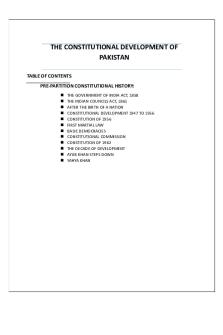
Constitutional History of pakistan
- 16 Pages
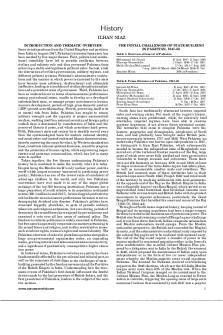
History Of Pakistan 1947-2017
- 15 Pages

History (Of Pakistan, 1947-2019)
- 16 Pages
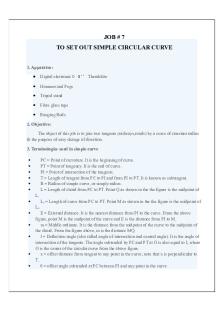
JOB - pakistan history flowchart
- 5 Pages

Pakistan History by M.R Kazmi
- 69 Pages
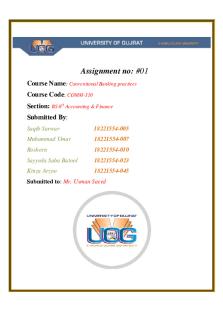
25 Banks of PAKISTAN
- 25 Pages
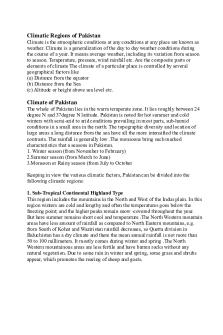
Climatic Regions of Pakistan
- 2 Pages
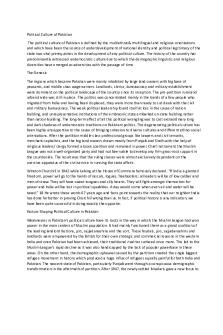
Political culture of Pakistan
- 11 Pages
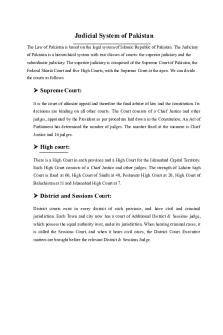
Judicial System of Pakistan
- 2 Pages
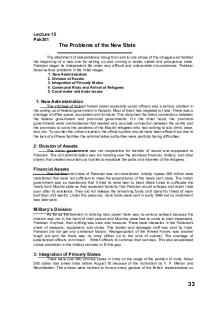
01 Early Problems of Pakistan
- 2 Pages
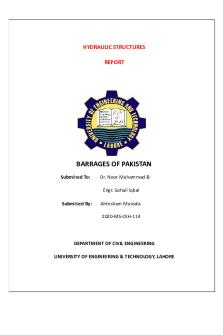
Barrages of Pakistan detail study
- 17 Pages
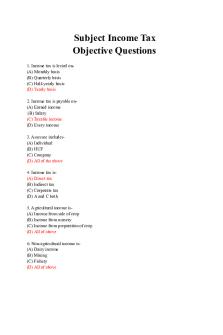
MCQs of Income Tax Pakistan
- 10 Pages
Popular Institutions
- Tinajero National High School - Annex
- Politeknik Caltex Riau
- Yokohama City University
- SGT University
- University of Al-Qadisiyah
- Divine Word College of Vigan
- Techniek College Rotterdam
- Universidade de Santiago
- Universiti Teknologi MARA Cawangan Johor Kampus Pasir Gudang
- Poltekkes Kemenkes Yogyakarta
- Baguio City National High School
- Colegio san marcos
- preparatoria uno
- Centro de Bachillerato Tecnológico Industrial y de Servicios No. 107
- Dalian Maritime University
- Quang Trung Secondary School
- Colegio Tecnológico en Informática
- Corporación Regional de Educación Superior
- Grupo CEDVA
- Dar Al Uloom University
- Centro de Estudios Preuniversitarios de la Universidad Nacional de Ingeniería
- 上智大学
- Aakash International School, Nuna Majara
- San Felipe Neri Catholic School
- Kang Chiao International School - New Taipei City
- Misamis Occidental National High School
- Institución Educativa Escuela Normal Juan Ladrilleros
- Kolehiyo ng Pantukan
- Batanes State College
- Instituto Continental
- Sekolah Menengah Kejuruan Kesehatan Kaltara (Tarakan)
- Colegio de La Inmaculada Concepcion - Cebu


